Property Newsletter | June 2023
South African youth buying fewer houses and cars
South African youth are buying fewer properties and Lightstone data shows that the proportion of cars being sold to the youth is also down on ten years ago.
In 2012, those under 35 accounted for 39% of new car purchases and 45% of property purchases above R20 000 – but by 2022 these numbers had dropped to 31% and 38% respectively.
As South Africa celebrated Youth Day on 16 June, property sales suggest, in addition to declining property transfers, those under 35 are switching to the lifestyle benefits offered by Sectional Title properties, they are buying later with the average age of First Time Buyers being higher than it was ten years ago, and they are increasingly buying solo.
Less houses bought by younger South Africans
Property transfers (of properties transacting for more than R20k) to youth over the past ten years have declined from 87 675 (45%) in 2012 to 81 519 (40%) in 2017 and 69 304 (38%) in 2022.
Property transfers (value >R20k) to the youth

The fall in sales to the youth (sales in 2022 is 79% of the 2012 sales volumes) is more radical than the overall sales (sales in 2022 was 94% of the 2012 sales volumes).
And less vehicles too…
According to Lightstone’s Signio platform, which automates the vehicle finance and insurance process, youth accounted for 31% of new car sales in 2022 compared to 39% in 2012.

Volkswagen’s popularity has grown over the last five years and is the youth’s popular choice at just over 25% market share, while Ford and Suzuki are also growing. Toyota is the big loser of the past ten years, dropping from 20% market share in 2012 to just under 15% by 2022.
Brands preferred by u35s
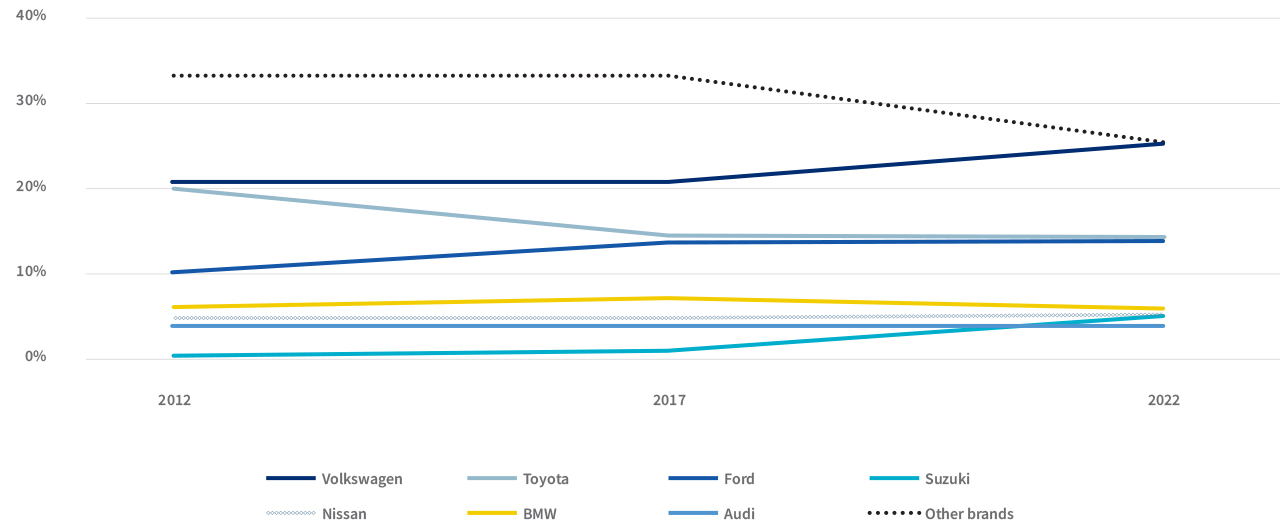
The big winner in the vehicle segment is the Crossover, which has climbed from around 3% in 2012 to just under 15% in 2022. SUVs and Above-One-Ton-DCabs have also grown in popularity, while small and medium Passenger vehicles have been the big losers.
Segments preferred by u35s
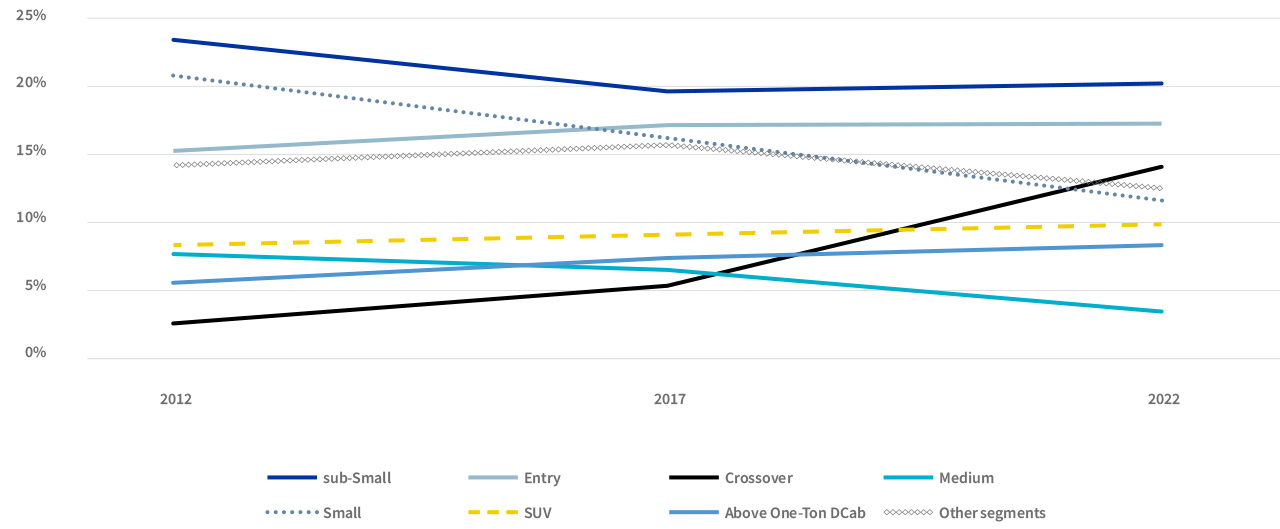
Property sales highest in R500k-R1m band
The proportion of sales to the youth is lowest in the under R20k band (10% for transfers at no value, 16% for transfers less than R20k), rising to 34% in the R20k-R500k band and 44% (the highest) in the R500k-R1m band and then dropping off to 39% in the R1m-R2m band and 27% in the >R2m band.
Transfers in the under R20k band are often RDP/subsidised housing transactions and are typically skewed towards older people.
Proportion of 2022 transactions to youth
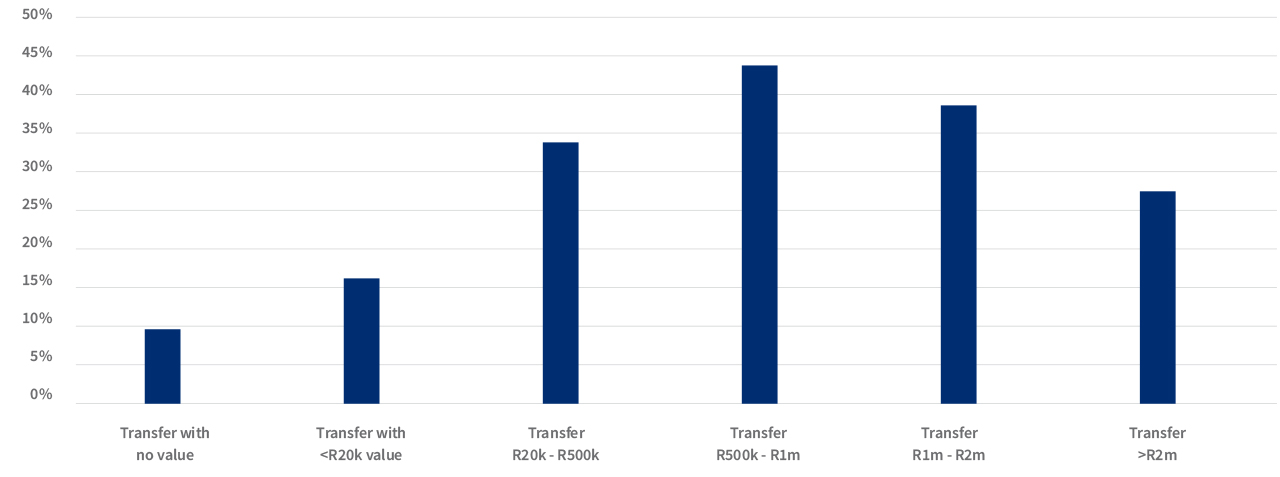
The average price of purchases by youth (graph below) over the ten years has increased from R700 000 in 2012 to R930 000 in 2017 and R1.2m in 2022. The increase, however, is largely attributable to house price inflation and not higher value assets being purchased. (see graph Spread of asset values in terms of current values).
Average prices paid by youth
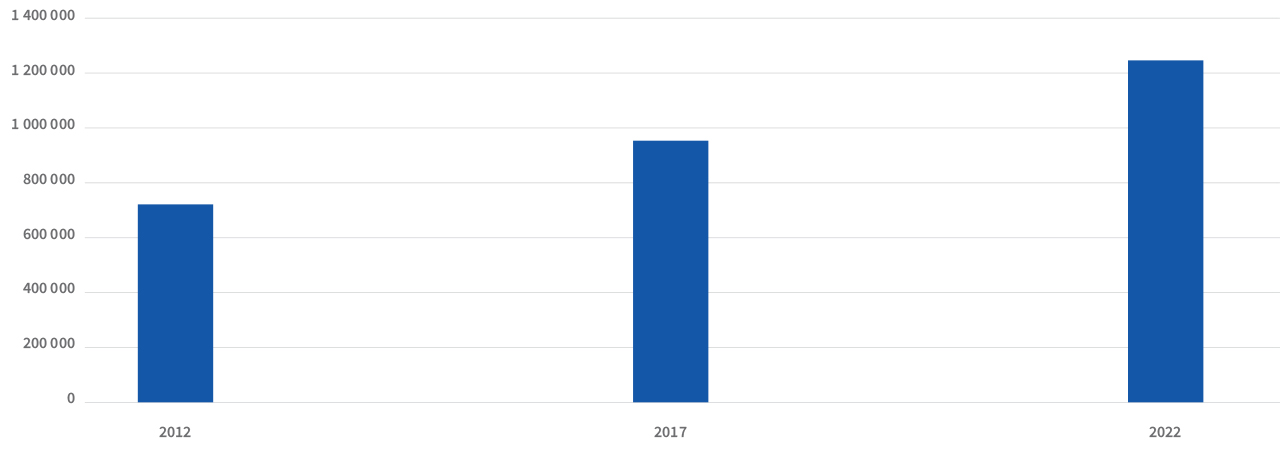
Spread of asset values in terms of current values
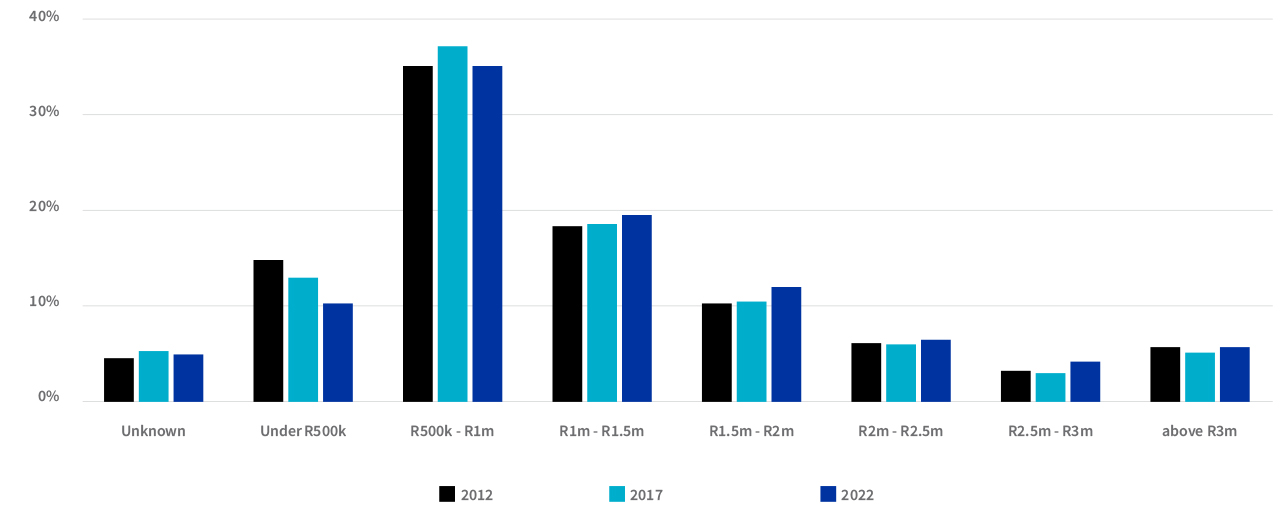
Youth are increasingly likely to buy properties as a single owner, rising from 69% in 2012 to just under 75% in 2022.
Single owner
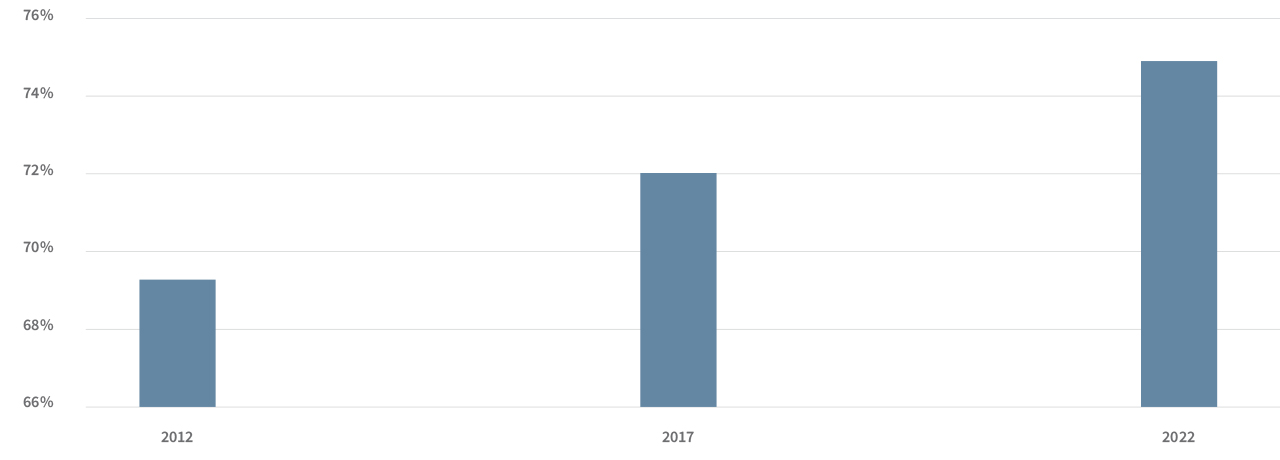
Youth buyers are opting increasingly for Sectional Title properties and their interest in Freehold properties is waning (see graph below), while interest in Estates is consistent. The shift is consistent with a preference for urban living which emphasises convenience and lifestyle amenities. This trend is influenced by the younger generation’s desire to live closer to work, reducing commuting time and providing easy access to recreational activities, restaurants, and shopping centres.
Youth preferred housing types
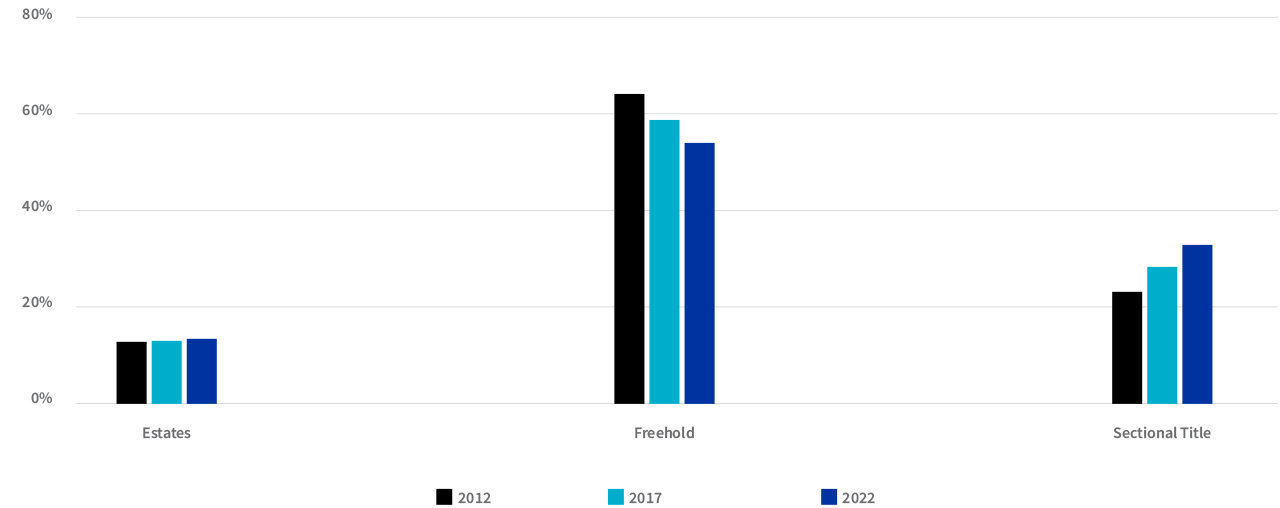
Youth are buying properties later in life, as the graph below shows, with 2017 and then 2022 volumes being higher as young people head to 35 years of age.
Age when buying


.png)
.png)
.png)
.png)